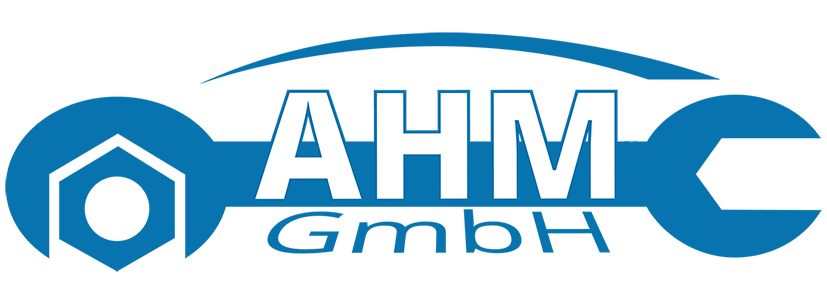With a new generation of software in SaaS (Software as a Service) mode, there are many tools that you can use to improve your processes and continuous improvement. But adopting an improvement process that is too gradual can be a barrier to breakthrough innovation. Indeed, this requires making “leaps” forward from time to time and reactivity that is incompatible with the time constraints of continuous improvement. 5S is a technique that is used in Kaizen to organize a workplace, while Kaizen is an organizational philosophy focused on continual improvement. People often hesitate to implement solutions by overanalyzing a problem or over-extending the scope of a solution. It’s a best practice here to seek a quick and easy-to-implement solution and apply it on a small scale.
Why implement the Kaizen approach?
Below are the original Japanese 5Ses and their common English translations. DMAIC is an agile management method aimed at improving the quality and efficiency of business-processes. The philosophy is all about the reduction of wastes and simplification of processes to achieve higher quality levels and shorten time to market for higher customer satisfaction levels.
- Kaizen implies continuous improvement for the better and engages employees at all levels.
- Similar to above, this step ensures that all personnel continually pay attention to performing and improving the above four steps.
- The method fosters ongoing learning and adaptability, where managers recognize and celebrate even the smallest improvements.
- And, thinking back to point #1, you have to make sure everybody adopts the new standard.
- A system should be in place where employees can give feedback and share their ideas about improving the business.
- It’s no use moving a part from area A to area B to perform a small action on it, only to return it back to area A.
Taking the Next Steps Forward with Your Operational Efficiency
As we’ve emphasized in this article, Kaizen is an organizational mindset that needs to be fostered constantly, which cannot be done by the magic wand of digital technology. If not, return to the drawing table and think of other solutions or use alternative solutions thought up during a blitz. If successful, as already said, it’s time to implement the solution on a broader scale. This step looks at all tools, materials, and equipment in an area and evaluates what is necessary and what can be discarded (or stored elsewhere).
These extend from small, on-the-spot improvements to large, organized projects. This means that management should provide them with the right workplace conditions and facilities to make workers feel happy. Furthermore, workers should not be burdened with an overload of work and should be rewarded for their performance. Learn how to implement quality assurance in construction to improve operations and carry out projects smoothly. Notion offers various resources that support the Kaizen journey, like customizable templates that connect overarching goals to specific projects and granular tasks.
It takes a long-term commitment of consistently making incremental changes in daily operations to maximize the benefits of kaizen and create a standard quality of work. Improved quality, productivity, and safety through kaizen management in the workplace results in increased employee morale, customer satisfaction, and company revenue. Taking advantage of smart technology can help organizations easily manage day-to-day continuous improvement efforts and consistently solve problems with cost-efficient solutions.
Solutions
A Kaizen Ninja would be able to identify problems, analyze them, and develop effective solutions. This involves organizing the workspace and keeping only the essential items needed to perform tasks, thus reducing clutter and inefficiency. Streamline processes, eliminate bottlenecks, enhance resource utilization, and build an agile and scalable infrastructure with SafetyCulture. Strive for operational excellence to boost competitive advantage, foster sustainable growth, and deliver long-term value.
In a Kaizen blitz, root cause analysis and continuous improvement tools can be used to find the origin of issues, brainstorm, and think of solutions. Kaizen isn’t just a thing for supervisors or managers; everyone in an organization needs to be involved. Everyone needs to be aware that Kaizen is an incremental process with seemingly insignificant improvements. However, if they can keep in mind that the results, over time, will be anything but trivial, motivation and morale will stay high. No one likes a messy workplace, but in the heat of production, grabbing a mop and cleaning a floor isn’t always in the what are the 5 elements of kaizen front of an operator’s mind. An clean workplace isn’t only nice to work in, it can also improve employee safety.
Continue Reading About Kaizen (continuous improvement)
One of the simplest problem-solving techniques is the 5 Whys Analysis, and performing it to determine the root cause of a problem can be effective in formulating solutions that prevent recurrence. Effective implementation and consistency are critical to the Kaizen process’s success. This phase involves rolling out changes across the organization or team, training employees, and monitoring new methods to ensure they become standard work procedures. The Kaizen technique is a helpful tool implemented in various stages of quality improvement initiatives and serves several roles. Applying the Kaizen idea to quality improvement projects in healthcare will save time, money, and effort. By continuously optimizing processes, products and services, Kaizen enables companies to remain competitive in a changing market environment.
Kaizen encourages the creation and maintenance of standardized work documents. These might include step-by-step instructions and process guidelines that outline the exact tasks, sequence, and expected outcomes of different procedures. Originating in Japan, the Kaizen principle is a concept based on five core elements and transcends borders, rooting itself in various industries, from automotive giants like Toyota to tech pioneers like Sony. Many different approaches are used to break down projects, plan tasks, find the causes of problems, manage resources and monitor progress. Kaizen thus mandates the participation of the whole business community — the entire workforce. Everyone, right from the management to those at the bottom of the business hierarchy are involved in Kaizen philosophy.
Standardization simply means that the rigorously defined processes that are discovered remain intact and are followed. This means there must be s trict adherence of all employees to the rules and processes outlined. The perfect transition from Seiri, Seition means “to set in order.” During this stage, your team organizes all the objects so that they are in their correct place for action. By now, all unnecessary objects are gone and all the tools you need are in the right place. The Five S of Kaizen stress structure, order, cleanliness, standardization, and sustaining of process.
- In September 1955, Japanese executives officially started visiting the United States as one of the initiatives of the Japan Productivity Center.
- The U.S., acting under the Marshall Plan, is helping Japan rebuild its manufacturing industry and improve its managerial capabilities.
- Team participation is encouraged in problem-solving rather than confining decision-making to the upper management levels.
- It takes a long-term commitment of consistently making incremental changes in daily operations to maximize the benefits of kaizen and create a standard quality of work.
- This element aims to eliminate bottlenecks in business operations to ensure that processes are streamlined, resulting in enhanced productivity and efficiency.
- Just-in-time manufacturing deals with exactly this problem by only producing products that have been ordered.
A cycle made up of seven steps can be implemented for continuous improvement and can provide a systematic method for executing this process. In a business context, it refers to a philosophy or practices that focus on continuous, incremental improvement of processes in manufacturing, engineering, and business management. The Kaizen process is an ongoing cycle — a continuous loop of identifying problems, implementing solutions, and seeking further improvements. This unceasing commitment to betterment lets organizations remain competitive and adaptable. Kaizen encourages individuals and teams to consistently enhance processes, reduce waste, and boost productivity.

